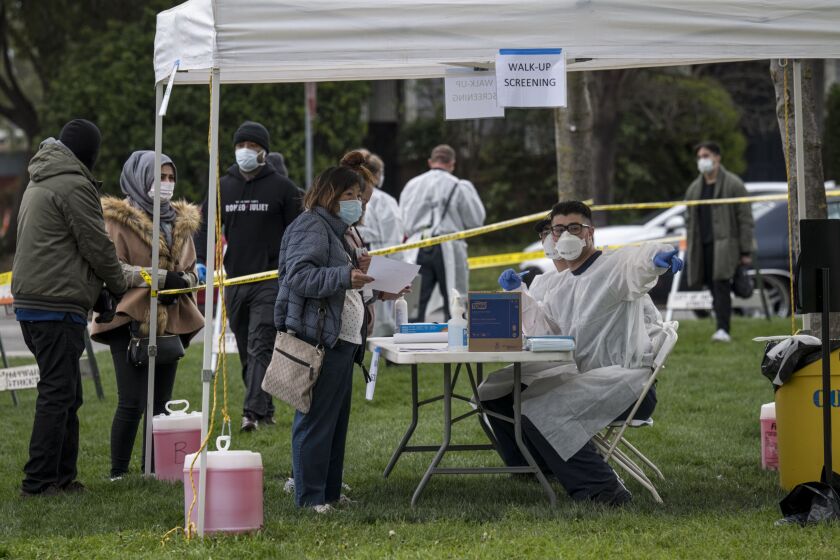WASHINGTON — Senators raised concerns Tuesday that two Federal Reserve credit facilities meant to aid localities and midsize businesses hit by the coronavirus pandemic will not work as intended because of eligibility restrictions.
At a Senate Banking Committee hearing, members of both parties said thresholds for obtaining aid from the Municipal Liquidity Facility and Main Street Lending Program could hamper the recovery for middle-market firms as well as for state and local governments.
“Excessive restrictions not only risk ineffectiveness for the Main Street Lending facilities, but also for other facilities, as well,” said Senate Banking Committee Chairman Mike Crapo, R-Idaho.
The two facilities are among roughly a dozen credit backstops the Fed unveiled to combat the economic effects of the pandemic, which combine the central bank's preexisting emergency powers with added funding under the Coronavirus Aid, Relief, and Economic Security Act enacted in March.
Tthe Municipal Liquidity Facility and the Main Street Lending Program were funded through money appropriated by the CARES Act; the law also specifically mandated the creation of the Main Street program.
Crapo said he was concerned that the minimum population threshold for communities eligibile for the Fed’s municipal facility, which was lowered from 500,000 to 250,000, will still cut off small counties and municipalities.

“The Fed updated the term sheet for the Municipal Liquidity Facility to lower the population thresholds for cities and counties, despite not being included in the CARES Act at all,” Crapo said. “While this was a step in the right direction, it still leaves many smaller and rural communities without direct access to financial resources, including no cities or counties in Idaho.”
Sen. Bob Menendez, D-N.J., said the loan terms associated with the Municipal Liquidity Facility would prevent localities from utilizing it.
“You suggested the Fed’s Municipal Liquidity Facility hasn’t been particularly successful so far possibly because the terms are too tight,” Menendez said to American Action Forum President Doug Holtz-Eakin, a witness at the hearing. “Currently any loans under the Municipal Liquidity Facility would have to be paid back in three years. … Wouldn’t a longer term make more economic sense?”
Holtz-Eakin warned that the loan terms for the two credit programs are too short to meet the needs of small municipalities and businesses.
“I don’t see why they’re not 10 years," he said. "There is a great opportunity to be helpful and there is no reason to rush the repayment.”
Aside from the loan terms, Menendez added that he was concerned about the interest rates associated with the Municipal Liquidity Facility.
As the pandemic has stretched on further into 2020, with more lockdowns and economic disruption predicted heading into the fall and winter, continuing to offer fee waivers has not always proved financially viable.
There are two key areas that CPA firms should closely watch to manage audit fees in 2020.
At least 39 states did not have enough money to pay all of their bills at the end of 2019, leaving them ill-prepared to shoulder the costs of the novel coronavirus pandemic, according to a new report.
“I’m concerned [about] the price of credit the Fed is offering to state and local government," he said. "They are offering more expensive loans to some investment-grade municipalities than ... to highly indebted companies through the Main Street Lending Program.”
Sen. Kyrsten Sinema, D-Ariz., suggested Congress should pass the State Municipal Assistance for Response and Transition Act, which would provide an additional $500 billion in direct funding to state, local and tribal governments.
“Additional support ensures continuity in vital local government services, empowers our local governments with the resources they need to fight the coronavirus, and strengthens our economy as they work to recover,” Sinema said.
Several members of the committee also warned that the Main Street lending facility, as designed, is too restrictive to serve midsize businesses. It is only available to businesses with fewer than 15,000 employees and those that are privately held. Companies with fewer than 500 employees have been encouraged to use the Small Business Administration's Paycheck Protection Program instead of the Fed's programs.
"We've created this cliff effect" on who is eligible, said Sen. Mark Warner, D-Va., adding that he shares concerns of others about how long it is taking the Fed to launch the Main Street program.
Sen. Martha McSally, R-Ariz., said businesses in her state would benefit from making smaller loans than the program allows.
“With the underwriting requirement and the minimum loan amount of $500,000, that is a barrier to a number of businesses with maybe 500 or 600 employees,” McSally said.
Holtz-Eakin suggested that the minimum loan size be reduced to half the current amount.






